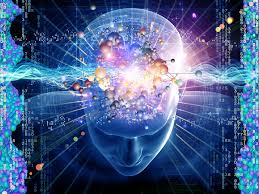WASHINGTON: When people have a brain injury so severe that they can't squeeze a loved one's hand or otherwise respond, there are few good ways to tell if they have any lingering awareness or are in a vegetative state. Now researchers have created a tool to peek inside the brain and measure varying levels of consciousness.
 But it offers the hope that one day doctors might track consciousness nearly as easily as they check blood pressure.
But it offers the hope that one day doctors might track consciousness nearly as easily as they check blood pressure.
The work reported on Wednesday is highly experimental, not ready for bedside use yet - and if it pans out, a big question is how to use it without raising false hope. No one knows what level of consciousness at a certain point after injury really predicts recovery.
"Consciousness can grow and shrink," said Dr. Marcello Massimini, a neurophysiologist at Italy's University of Milan who led the research to quantify just how much that is happening under different circumstances.
It seems obvious - consciousness fades during deep sleep, and doctors can slip us under with anesthesia. Yet scientists don't have a good way to measure consciousness, especially when the very ill appear to be unconscious. It's important to try to distinguish if patients are at least minimally conscious, and not in a vegetative state, because the sooner there's some sign of awareness, the better the chance of recovery.
Today, doctors check if those patients can do things like blink or move a limb on command, or react to touch or pain. If not, scans of the brain's electrical activity may offer clues. Scientists even have put seemingly unconscious patients inside MRI scanners and told them to imagine throwing a ball. How the brain reacts can indicate if they're aware and just can't show it, what's called locked-in syndrome. But all these tests have drawbacks.
The new work, reported in the journal Science Translational Medicine, aims for an easier, more objective measure. It's based on the theory that consciousness depends on the complexity of activity in the brain, how well different regions connect and process information. For example, when you're deeply asleep, the neighbor's car alarm may not wake you but your brain still processes that you heard it. When you're wide awake, it also processes how annoying the alarm is and how often it goes off.
Massimini's team combined two well-known medical devices. First, a coil delivers a powerful pulse of magnetism that travels through the skull to stimulate the brain, essentially knocking on it to say "wake up." Then an EEG, which measures brain waves through electrodes attached to the scalp, records the patterns of activity as neurons fire in response.
The final trick: The researchers created a formula to compare the complexity of those resulting brain patterns by "zipping" them, like digital files are compressed so they can be emailed. They called the resulting numerical measurement the PCI, or pertubational complexity index.
The team compared tests from 32 healthy people who were awake, asleep, dreaming or anesthetized, and 20 people with a variety of serious brain injuries. The two patients with locked-in syndrome clearly were aware, scoring nearly as high as awake and healthy people, they reported. The patients diagnosed as being in a vegetative state had scores as low as people rendered unconscious by the most powerful anesthesia. The minimally conscious were somewhere in-between.
The strategy could miss consciousness, so it wouldn't give doctors enough information for end-of-life decisions, researchers caution.
But it's a pioneering study that offers highly promising leads, said Dr. Nicholas Schiff, a professor of neurology and neuroscience at Weill Cornell Medical College in New York, who wasn't part of the project.
If it's ultimately proven to work, the bigger impact could be in helping doctors study whether patients improve when given different treatments, added Dr. Lori Shutter, a brain intensive care specialist at the University of Pittsburgh, who also wasn't involved with Wednesday's work.
But she cautioned that just finding a glimmer of consciousness could mislead families hoping for a miracle long after the possibility for improvement is over.
"This may provide a lot of insight," Shutter said. "The downside is once you prove there's any consciousness, how will a family react?"
Source: TIMES OF INDIA
Author : ATHUL MENON (CEO)





No comments:
Post a Comment
Share Your Opinion With All!